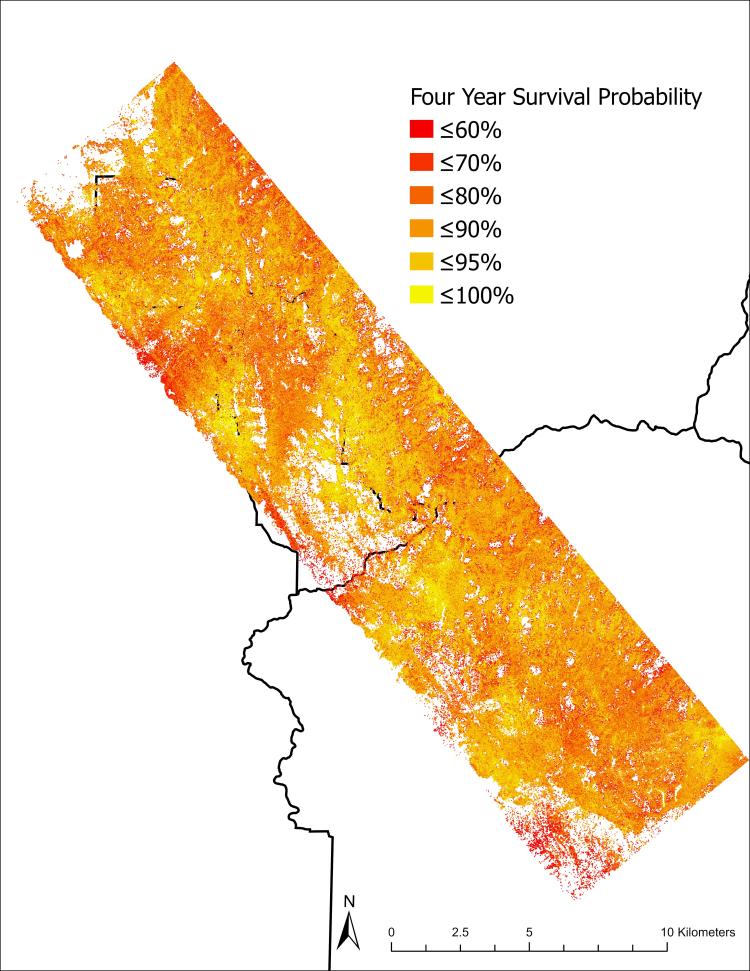In recent decades, forests worldwide have experienced dramatic and often unexpected drought-related tree mortality events. California recently suffered its most extreme drought on record, resulting in the deaths of tens of millions of trees. Beyond the immediate impact on forests, such mortality events substantially increase the risk of catastrophic fire, which has the potential to change entire landscapes overnight. Faced with forecasts of similar droughts in the future knowledge of forest vulnerability may support managers so that they can effectively target treatments to reduce the risk of extreme mortality.
USGS scientists combined high-resolution remote sensing imagery obtained by the Global Airborne Observatory during the drought with robust ground-based data to develop models of tree survival probability. These models were used to create a drought vulnerability assessment for a large swath of the mixed conifer forests in Sequoia and Kings Canyon National Parks. The researchers then validated these assessments with an independent dataset. The models were found to be highly accurate for the most abundant species in the forest. Future work may expand the use of these vulnerability tools to the mixed conifer forests of the Sierra Nevada at large.
https://doi.org/10.1002/eap.2514

Four-year survival probability for trees in Sequoia and Kings Canyon National Parks.

